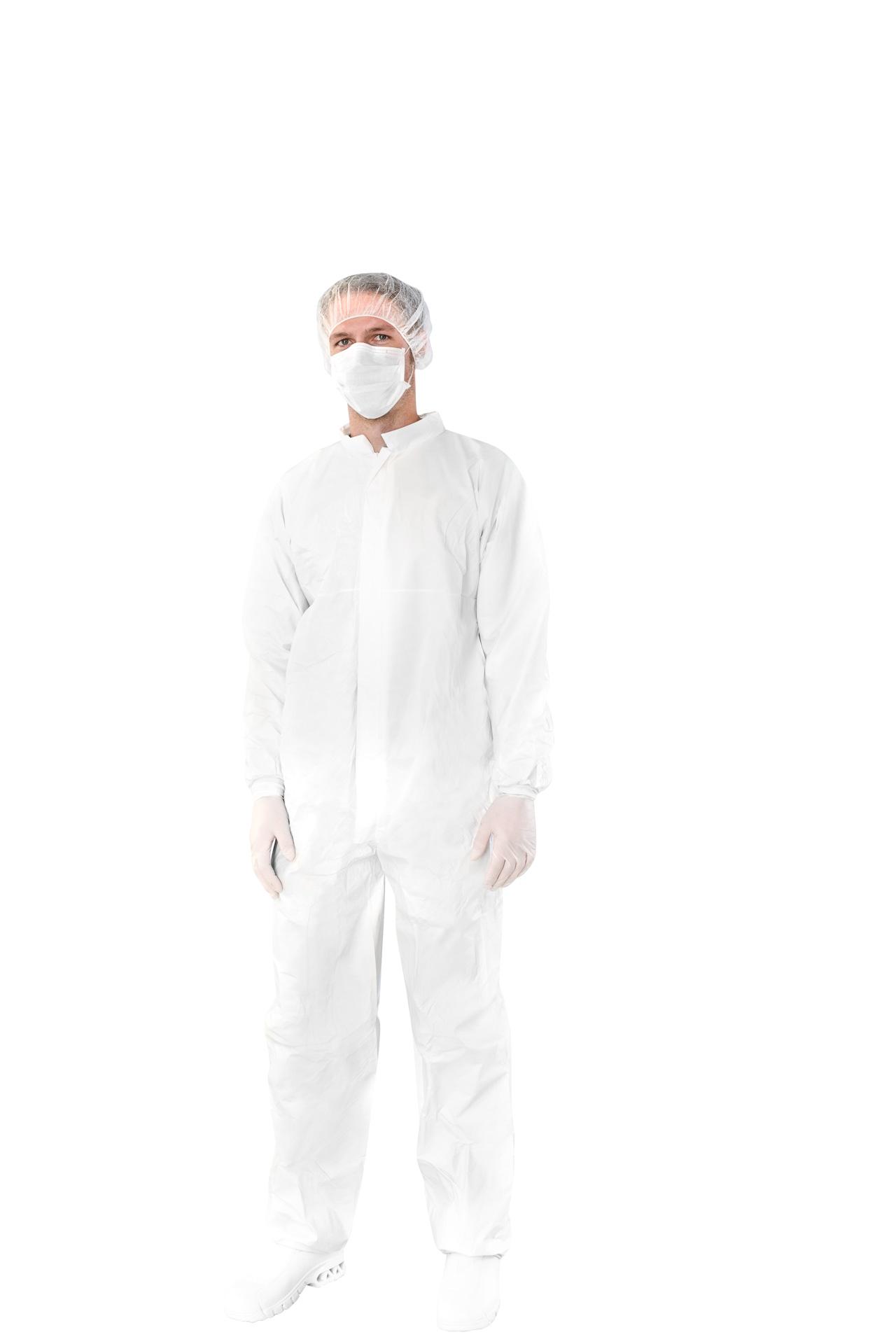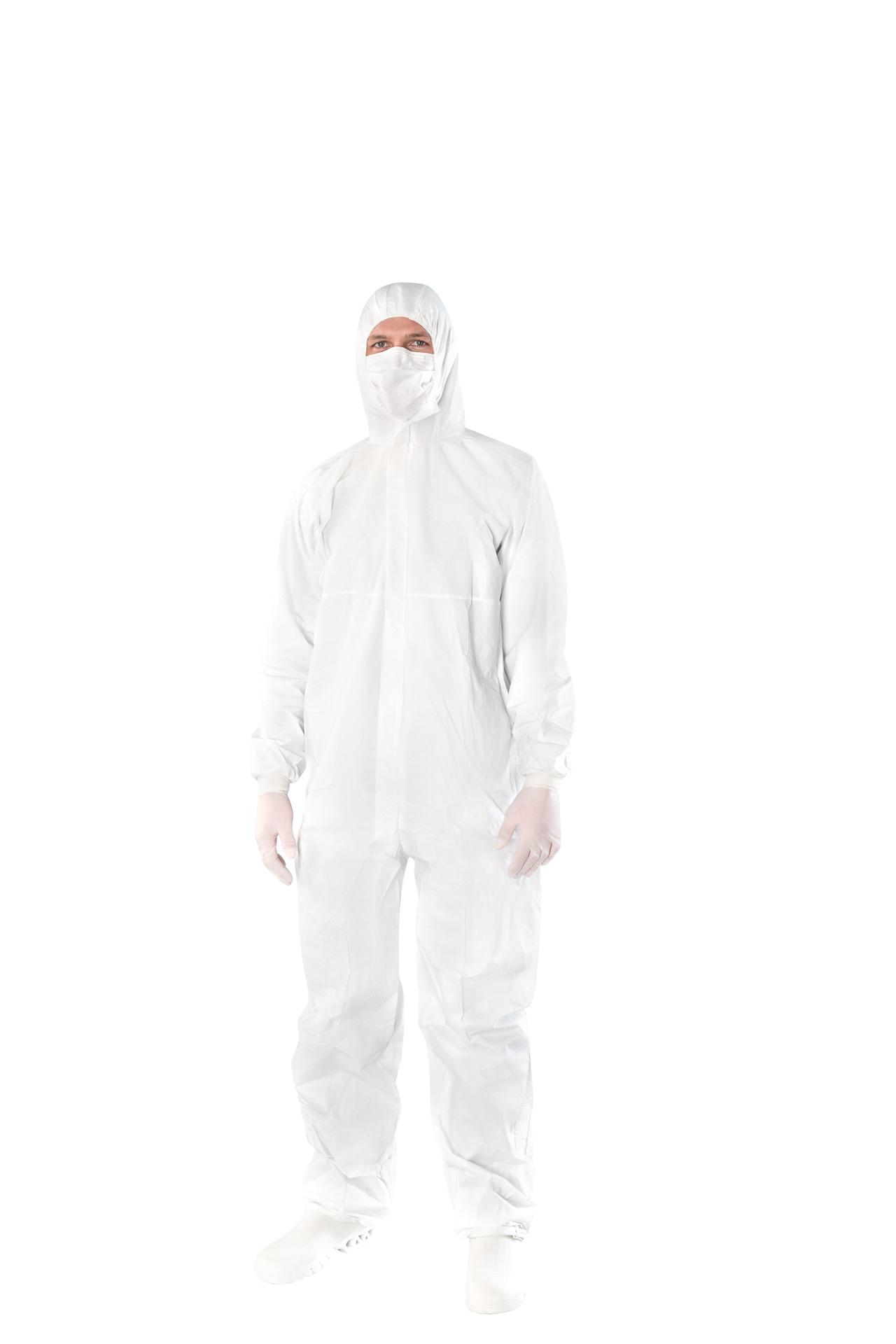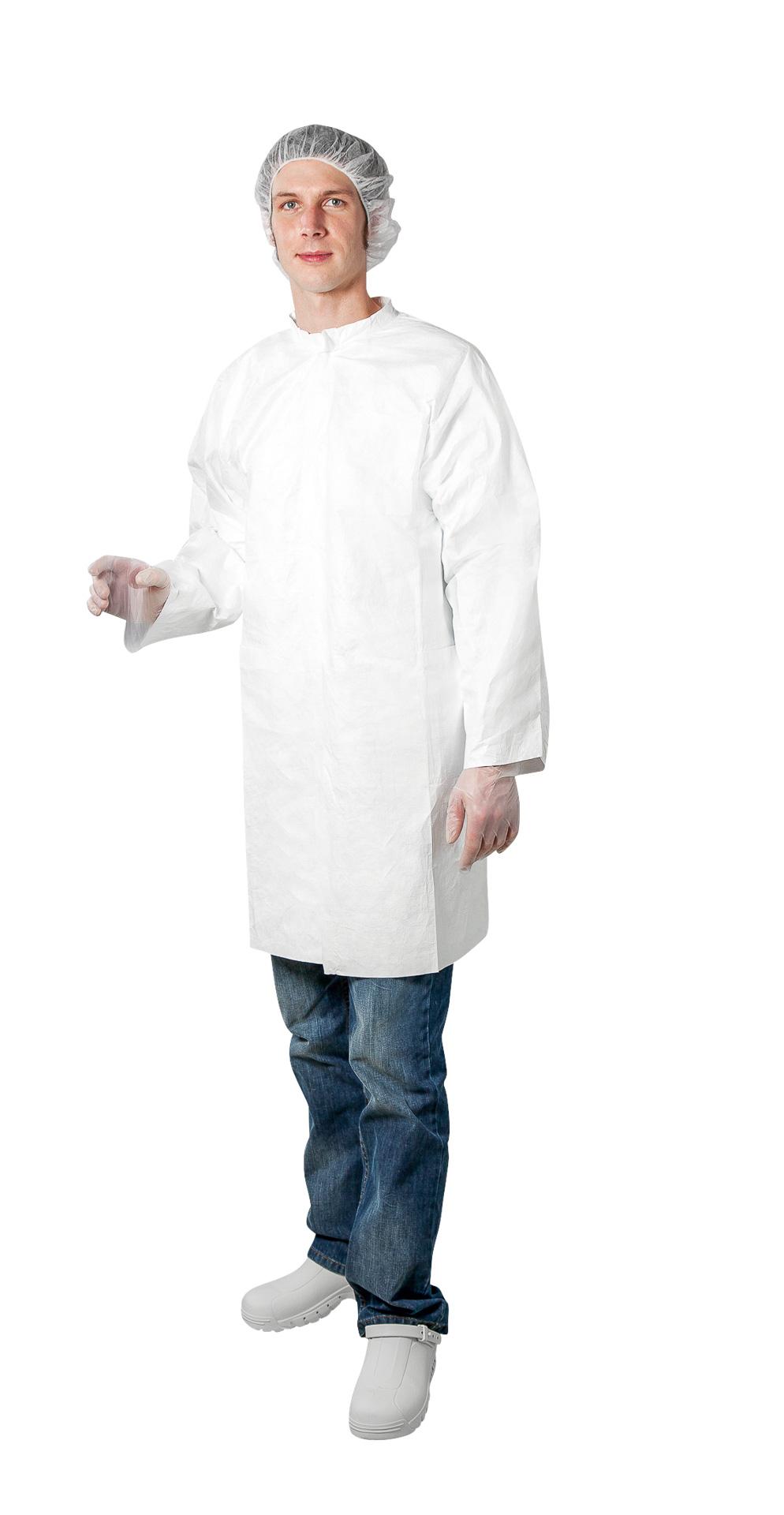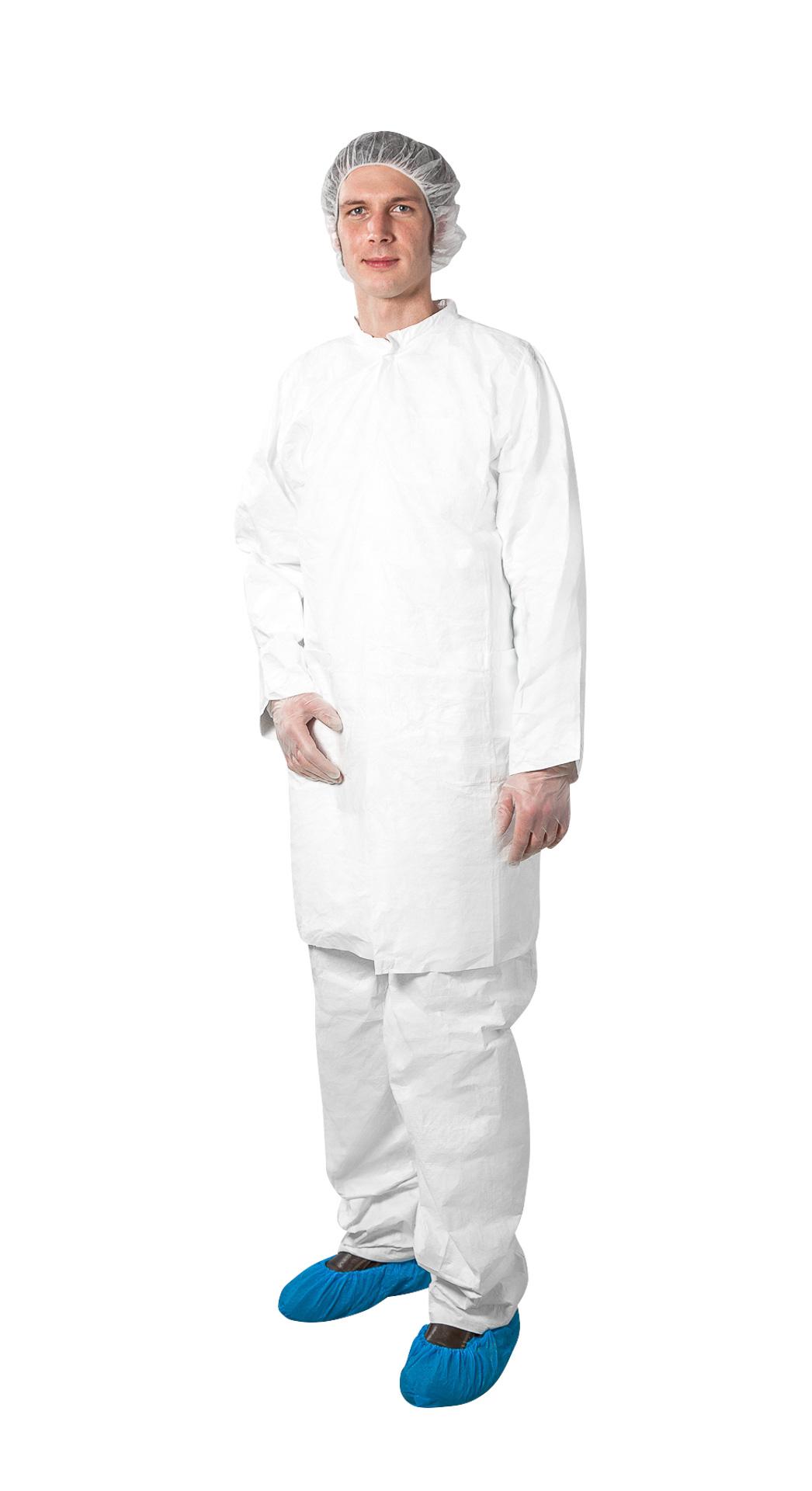With us you will find everything you need for a safe working process in a cleanroom. Both cleanroom clothing and cleanroom cleaning play an important role. Cleanroom clothing protects the cleanroom from particle emissions by employees. Whether cleanroom shoes, cleanroom overalls or cleanroom gowns - our products retain particles while still being breathable and comfortable to wear. Careful cleanroom cleaning and the correct use of cleaning accessories is also crucial to maintaining cleanroom quality. Cleaning agents, cleanroom cloths, mops and cleanroom hoovers are made from special materials and compositions especially for cleaning cleanrooms. We will be happy to advise you on an individual concept for your cleanroom equipment.

Disposable overall with collar
Product details
Disposable overall with hood
Product details
Disposable gowns, Zip
Product details
Disposable gowns, Velcro
Product details
Disposable pants
Product detailsCleanroom clothing is special protective clothing worn in cleanrooms to prevent contamination of the air with particles and microorganisms. Cleanroom clothing must meet various properties depending on the cleanroom class and area of application. The most important properties are:
- Particle retention: the ability of the garment to retain particles from the surface and from within the fabric. This is determined by the pore size, density and type of material.
- Particle migration behavior: The extent to which particles are released from the garment when it moves or is exposed to airflow. This depends on the surface texture, loading and adhesion of the particles.
- Abrasion resistance: the resistance of the protective clothing to wear and damage from friction or mechanical stress. This affects the service life and particle migration behavior of the garment.
- Electrostatic behavior: The ability of the garment to absorb, dissipate or neutralize electrostatic charges. Electrostatic charges can attract or repel particles, increasing the risk of contamination.
- Wearing Comfort: The comfort and ergonomics of the garment for the wearer. This includes factors such as fit, breathability, moisture management, temperature regulation and skin tolerance.
Cleanroom garments can be designed as disposable or reusable. Choices include cleanroom shoes, cleanroom gloves, cleanroom coveralls, cleanroom smocks, or even cleanroom beard guards. Disposable clothing is disposed of after a single use, while reusable clothing can be cleaned, decontaminated and sterilized multiple times. Reusable clothing has the advantage of being more environmentally friendly, more durable and, depending on requirements, more cost-effective than disposable clothing.
Cleanroom clothing is special protective clothing worn in cleanrooms to prevent air contamination with particles and microorganisms. Cleanroom clothing must be regularly cleaned, decontaminated and sterilized to maintain its properties and meet cleanroom requirements. The cleaning of cleanroom garments requires specific procedures and means, depending on the type of garment, the cleanroom class and the area of application.
For this reason, it is recommended to leave the cleaning of cleanroom garments to a professional service provider who has the necessary know-how, the appropriate equipment and the required certifications.
This service provider collects the dirty laundry, sorts it, cleans it and dries it in special washing machines and dryers under cleanroom conditions. The laundry is then decontaminated and sterilized so that it can be delivered again in airtight packaging.
Cleanrooms generally have to meet certain requirements for air quality, temperature, humidity and particle count to avoid contamination of products by particles, microorganisms or chemical substances. Improper handling of products in the cleanroom can have serious consequences for the quality of the end product, product safety and product liability. Proper use should always be considered when using accessories and clothing in the cleanroom:
- Use of unsuitable or uncertified products in the cleanroom: Not all products are suitable or approved for use in the cleanroom. Examples of unsuitable or uncertified products in the cleanroom include normal clothing, stationery, cosmetics or food.
- Use of damaged or expired products in the cleanroom: Damaged or expired products in the cleanroom may lose their function or effectiveness. Examples of damaged or expired products in the cleanroom include torn cleanroom gloves, contaminated filters, expired disinfectants, or defective measuring devices.
- Using products in the cleanroom without following regulations or instructions: The use of products in the cleanroom requires compliance with certain regulations or instructions that govern the proper handling, storage, use and disposal of the products.
All of the above can lead to increased particle or microorganism loads that compromise cleanroom class and contaminate products.
To avoid improper use of products in the cleanroom and to ensure product quality, safety and responsibility, it is important to take the following measures:
- Selecting suitable and certified products for the cleanroom: products for the cleanroom must meet the requirements of the respective cleanroom class and area of application and have the appropriate certificates. In addition, the products must be regularly checked for their cleanroom suitability.
- Checking damaged or expired cleanroom products: These must be checked for damage or defects before use and replaced or repaired if necessary. They must also be checked for their expiration date and replaced if necessary.
When working in a cleanroom, cleanroom cleaning is an important issue. Cleanroom cleaning is a critical process that requires the utmost care and specifications to maintain cleanroom standards. The following is important to keep in mind:
- Standardized procedures: Cleaning protocols should be clearly defined and regularly reviewed.
- Appropriate cleaning agents: Only specifically approved cleaning agents that do not cause contamination should be used.
- Contamination control: Personnel must wear protective clothing to minimize the introduction of contamination.
- Frequency: The interval at which cleanroom cleaning takes place should be clearly defined.
- Equipment: Cleaning equipment, such as cleanroom vacuum cleaners, mops, cloths or other cleaning equipment accessories, should be specifically designed for cleanroom use to minimize particle buildup.
- Contamination monitoring: Periodic monitoring should be conducted after cleaning to evaluate the effectiveness of cleaning and to ensure compliance with standards.
- Documentation: All cleaning activities should be carefully documented.